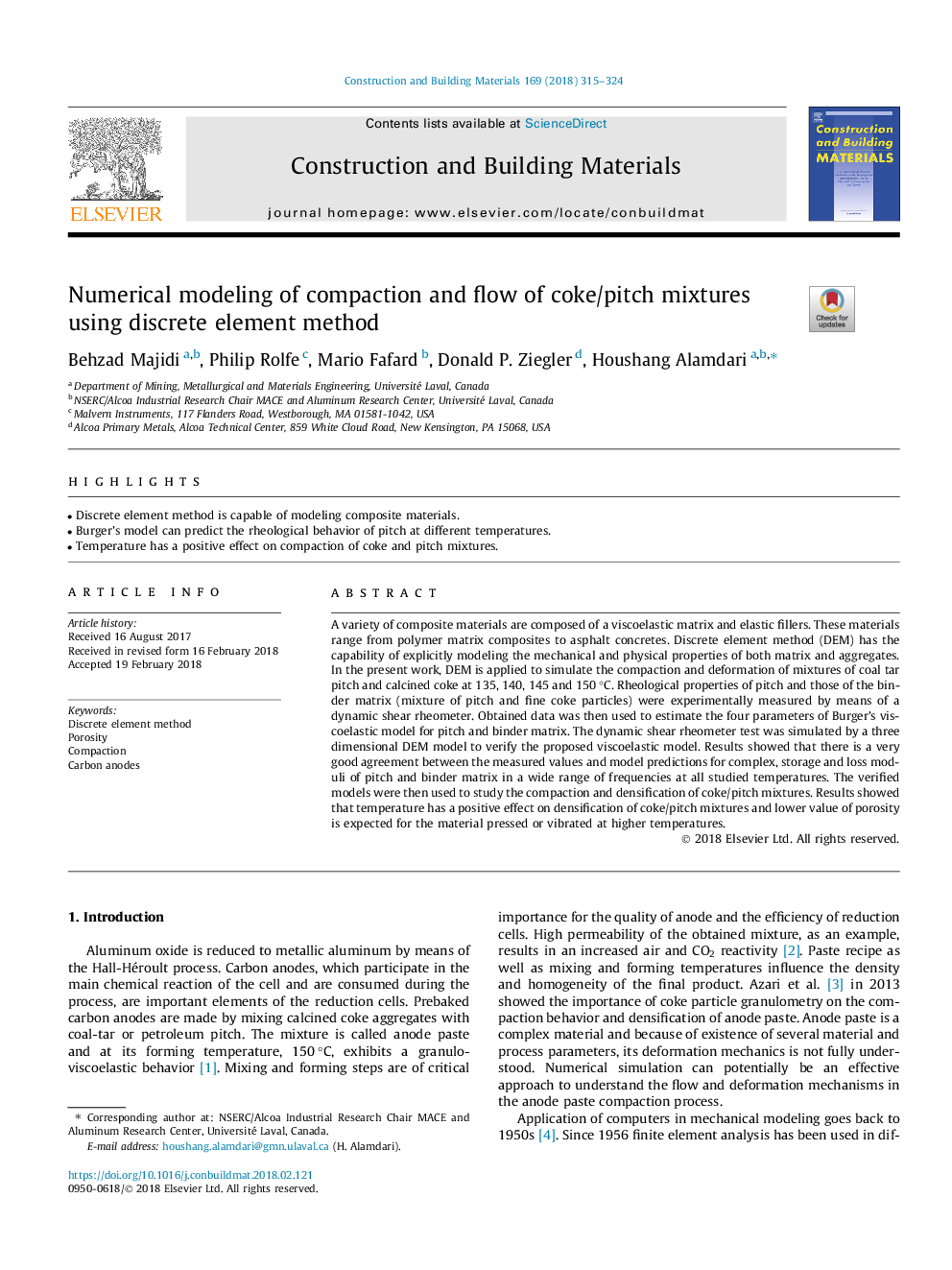| Article ID | Journal | Published Year | Pages | File Type |
|---|---|---|---|---|
| 6714495 | Construction and Building Materials | 2018 | 10 Pages |
Abstract
A variety of composite materials are composed of a viscoelastic matrix and elastic fillers. These materials range from polymer matrix composites to asphalt concretes. Discrete element method (DEM) has the capability of explicitly modeling the mechanical and physical properties of both matrix and aggregates. In the present work, DEM is applied to simulate the compaction and deformation of mixtures of coal tar pitch and calcined coke at 135, 140, 145 and 150â¯Â°C. Rheological properties of pitch and those of the binder matrix (mixture of pitch and fine coke particles) were experimentally measured by means of a dynamic shear rheometer. Obtained data was then used to estimate the four parameters of Burger's viscoelastic model for pitch and binder matrix. The dynamic shear rheometer test was simulated by a three dimensional DEM model to verify the proposed viscoelastic model. Results showed that there is a very good agreement between the measured values and model predictions for complex, storage and loss moduli of pitch and binder matrix in a wide range of frequencies at all studied temperatures. The verified models were then used to study the compaction and densification of coke/pitch mixtures. Results showed that temperature has a positive effect on densification of coke/pitch mixtures and lower value of porosity is expected for the material pressed or vibrated at higher temperatures.
Related Topics
Physical Sciences and Engineering
Engineering
Civil and Structural Engineering
Authors
Behzad Majidi, Philip Rolfe, Mario Fafard, Donald P. Ziegler, Houshang Alamdari,
